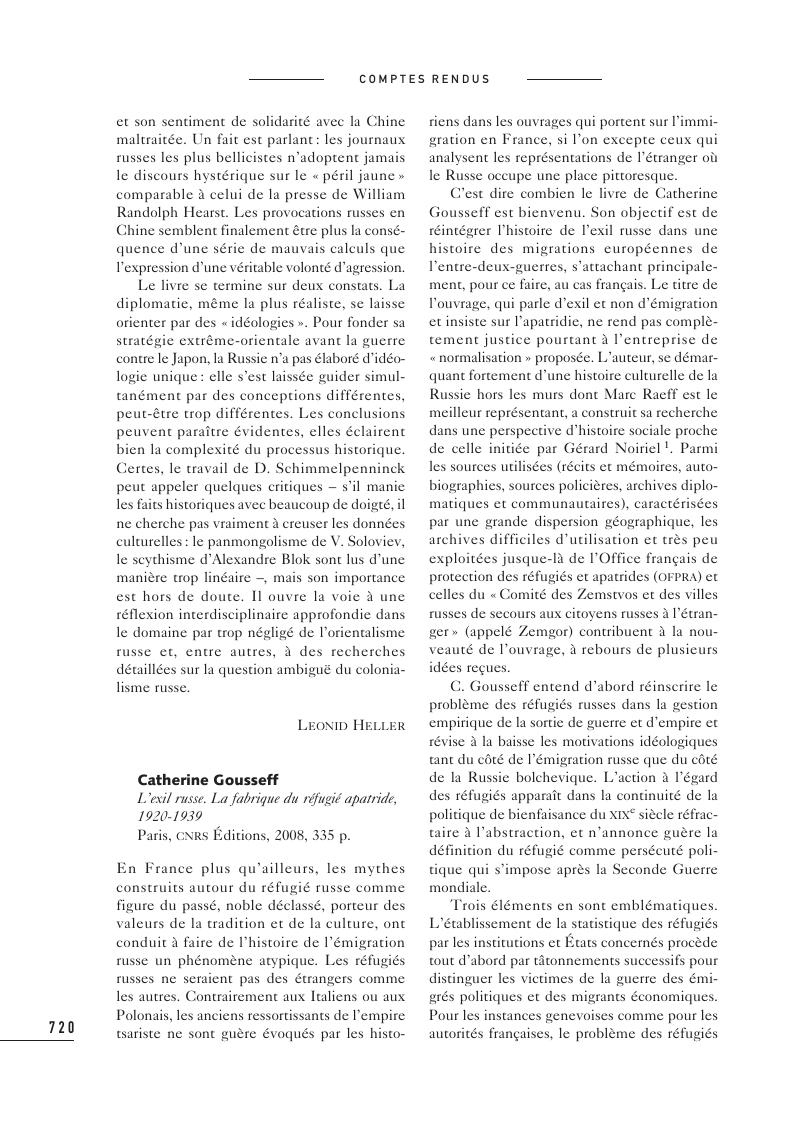No CrossRef data available.
Published online by Cambridge University Press: 04 May 2017

1 - Raeff, Marc, Russia abroad: A cultural history of the Russian emigration, 1919-1939., New York/ Oxford, Oxford University Press, 1990 ;Google Scholar tout particulierement, Noiriel, Gérard, Refugies et sanspapiers. La République face au droit d’asile, XIXe- XXe siècles., Paris, Hachette litteratures, [1991] 1999.Google Scholar
2 - Kévonian, Dzovinar,Réfugiés et diplomatie humanitaire. Les acteurs européens et la scène procheorientale pendant l’entre-deux-guerres., Paris, Publications de la Sorbonne, 2004.Google Scholar
3 - Pichon-Bobrinskoy, Olga et Gousseff, Catherine, «L’invention d’une politique humanitaire. Les réfugiés russes et le Zemgor (1921- 1930)», no spécial, Cahiers du Monde Russe., 46/4, 2005.Google Scholar